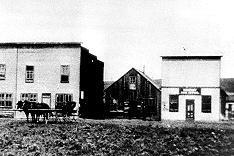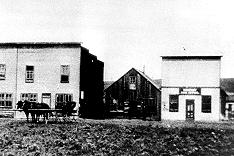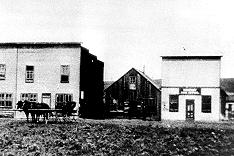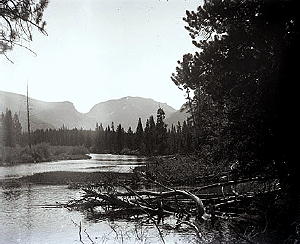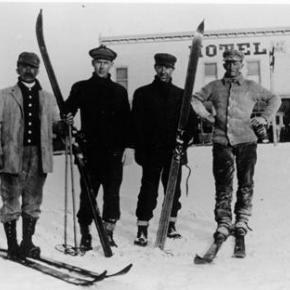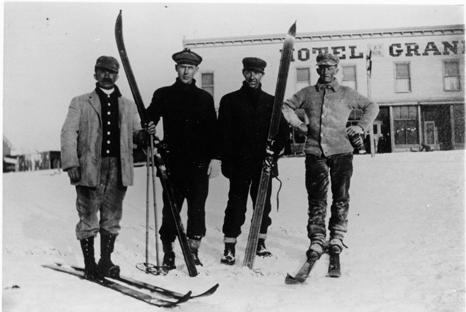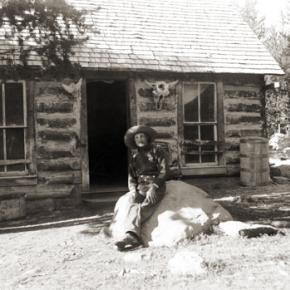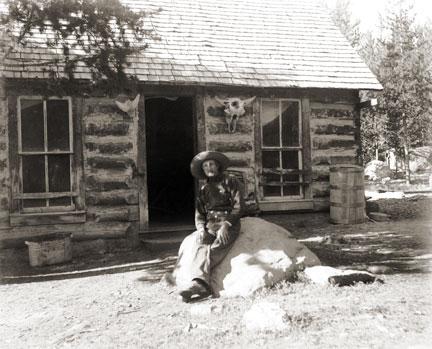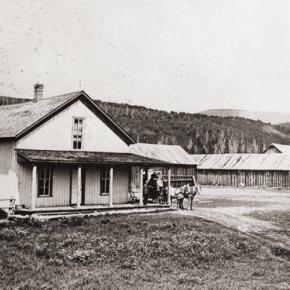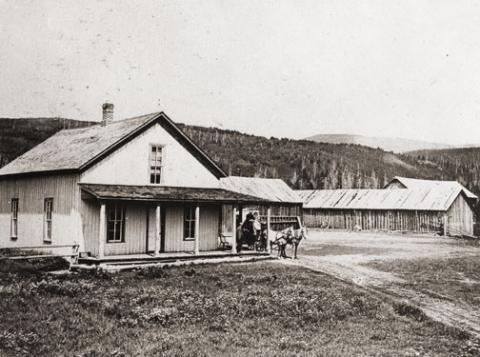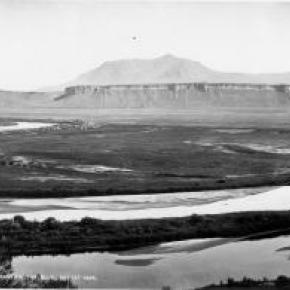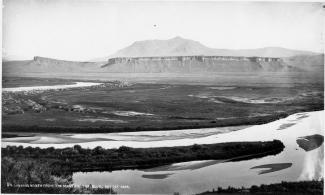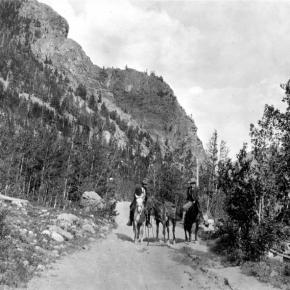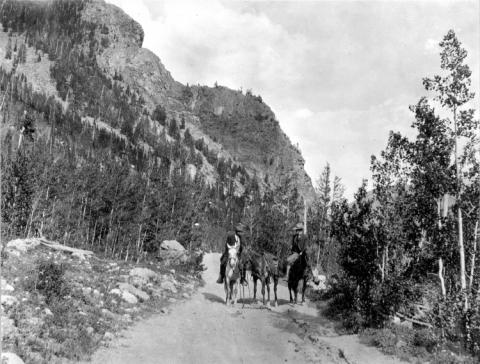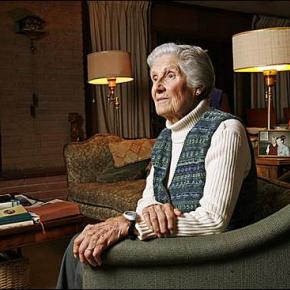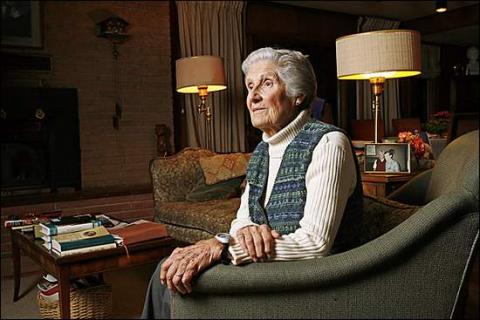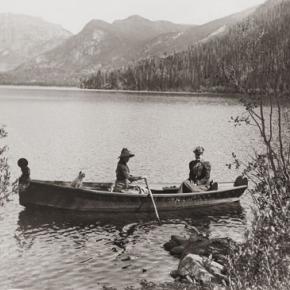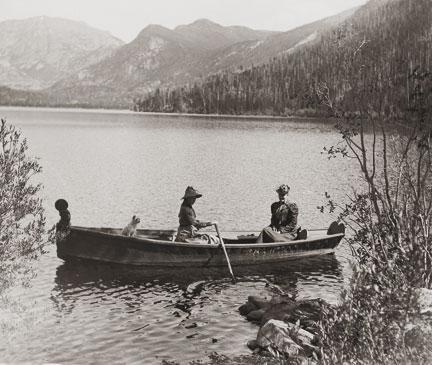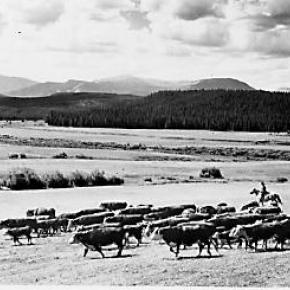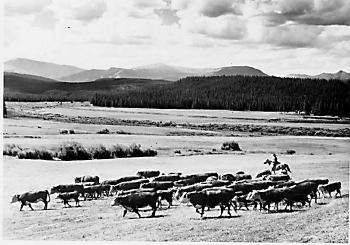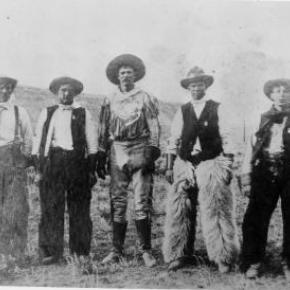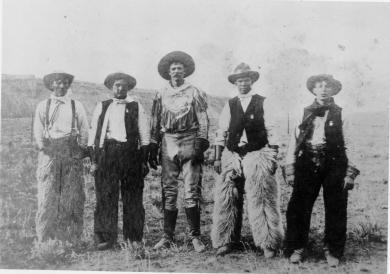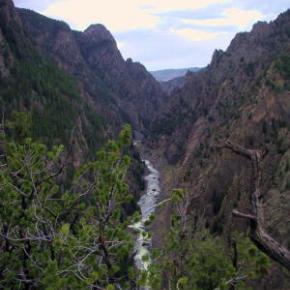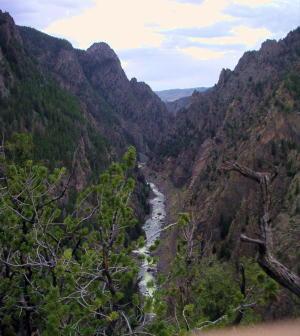November 2007
Betty Cranmer, a longtime Granby resident, says she doesn't like to be in the spotlight. Her modest home with brown siding and roof, tucked into a hill behind a stately spruce tree, reflects nothing of her and her family's past. Betty's story - full of heartache and triumph - deserves recognition.
She is a World War II veteran, a cancer-survivor, and the mother of five children (her sixth son, Forrest, died when he was 33.) She is the wife of the late Chappell Cranmer, whose father, George Cranmer, is the Cranmer the ski run at Winter Park Resort is named after. At 86 years old, Betty has lived a fuller life than many - and she shows no signs of slowing down.
She was born in England on Aug. 29, 1921. When she was 18, she joined the Women's Royal Air Force and was stationed at a burn and plastic surgery hospital, later named Queen Victoria Cottage Hospital. Deep down, she had wanted to be stationed at a fighter station instead - closer to "where the action was" - because she had just lost her first love, an Australian man, who was shot down by enemy fire. "My job was to clean up burns, which were very bad," Betty said. "A lot of them didn't have eyelids, or their noses were burned off."
Betty was fascinated by the way the doctors would build up the soldier's faces by skin grafting, she said. "It was very interesting, once you get over the smell of burns, and get into the feeling you're doing a service for those people," she said. Betty served at the hospital for four-and-a-half years. Her home was in a small town in Sussex, 30 miles from the south coast of England. The town was sometimes known as "bomb alley" during the war. Because of the town's proximity to London, German planes would often drop their bombs on her town on their way to London, she said.
She recalled pilotless planes - "big bombs with wings, nothing else" - and running for cover, although there wasn't any. She recalled the Battle of Britain, and how the sky was "almost black" with hundreds of German planes. One night, as she was working at the hospital, a young pilot from Denver was brought in. He was a member of the Canadian Air Force who had crashed in the North Sea, and spent 14 days on a dingey with no food or water. When he was finally found, semi-conscious, he was brought to a nearby hospital. "When they took his boots off, his toes came off, because they'd been immersed in water and cold for so long," Betty said. "So they sent him down to our hospital to see if we could do some grafting on his feet."
After a year of treatment, however, there was nothing the hospital could do for the young pilot; to save his life, they amputated his legs, and he was forced to use a wheelchair. He and Betty struck up a friendship, and she would often take him to town where they'd visit the cinema or local pub. Eventually, they fell in love.
One day after leaving the cinema early because Betty had to return to work, they were heading down a hill toward the hospital when a German plane flew over them. Both of them were in uniform. "I said, "My goodnesss!? There were no sirens, nothing ." The plane circled and opened fire. "I was so frightened, I let go of his (wheel)chair. Thankfully he grabbed the front wheels and was able to stop himself."
Betty and the young man returned to the hospital safely, but the attack had brought in many casualties. Eighty people were killed and 250 were wounded. The cinema they attended was destroyed by a single bomb. Betty's eyes glaze over as she remembers how lucky they had been to survive that day. "I wasn't a believer ... I didn't know there was a God in those days, because when you're in a war, well ... But I think then, by the grace of God, we got out of that." Betty and the pilot were married in the mid-1940s, and had a daughter named Susan after the war ended. Although the war was over, life wasn't any easier, Betty said. "It's hard for people who were in the war in England to describe rationing to people in this country. ... We had two ounces of meat per week, per person. You could not buy anything in the shops at all without giving up coupons. Two ounces of butter, four ounces of sugar."
Betty was pregnant with her second child when her husband died suddenly due to complications. Before his death, he told her to move to Denver where his father lived. It was 1946, and America offered a better life. Betty took Susan and all that they had and moved to Denver; she first set foot on American soil in May 1946, where she eventually had her second child, Holbrook.
Two years later, she met Chappell Cranmer, who was an investor at the time. They were married and had four children: Allen, Bruce, Genie and Forrest, and lived in Denver for 25 years. In 1969, her husband decided to move to Granby. "He attended seminary school and was ordained as a priest," Betty explained. "The Bishop said, I want you to move to Granby.' "Betty joined her husband one year later, and they bought a home she would continue to live in the next 37 years.
Chappell, or "Chap," started a church in 1981 called St. Columba Chapel - later named Cranmer Chapel - that is located behind the Silver Screen Cinema in downtown Winter Park. It is there to this day and is a vital part of the local community. Betty and her husband continued to visit England every two years to see her parents, but in 1994 she was diagnosed with cancer in her abdomen. Betty beat the cancer - despite a doctor's prognosis that she had three weeks to live - and would go on to fight and survive two more major bouts of cancer.
Chap died in 2000, two years after Betty fought off colon cancer. She continues to travel, and has just returned from a trip to England and Spain with her son. As she sits in her couch chair, her white and gray hair framed by the sun peeking through her window, one can't help but be in awe of Betty Cramner. Her home is immaculate but cozy and inviting, and the rooms are filled with photographs of children and grandchildren. She loves living in Granby, she said, where everything is close by.
"I'm very independent. I don't like driving in big blizzards and stuff like that, so I can walk to the library, the post office, the church every Sunday. ... So I like living here. I couldn't live in a big city anymore."
Betty knows she has led an amazing life, but her humbleness is what makes her unique. As she rattles off her daily routine - snowshoeing, walking, swimming, attending four different Bible studies - she mentions she is a volunteer at Cold Springs, a local greenhouse just up the road. "I love flowers," she said, as she turns and faces her bay window full of geraniums and different types of plants. "Would you like one? I have plenty."









